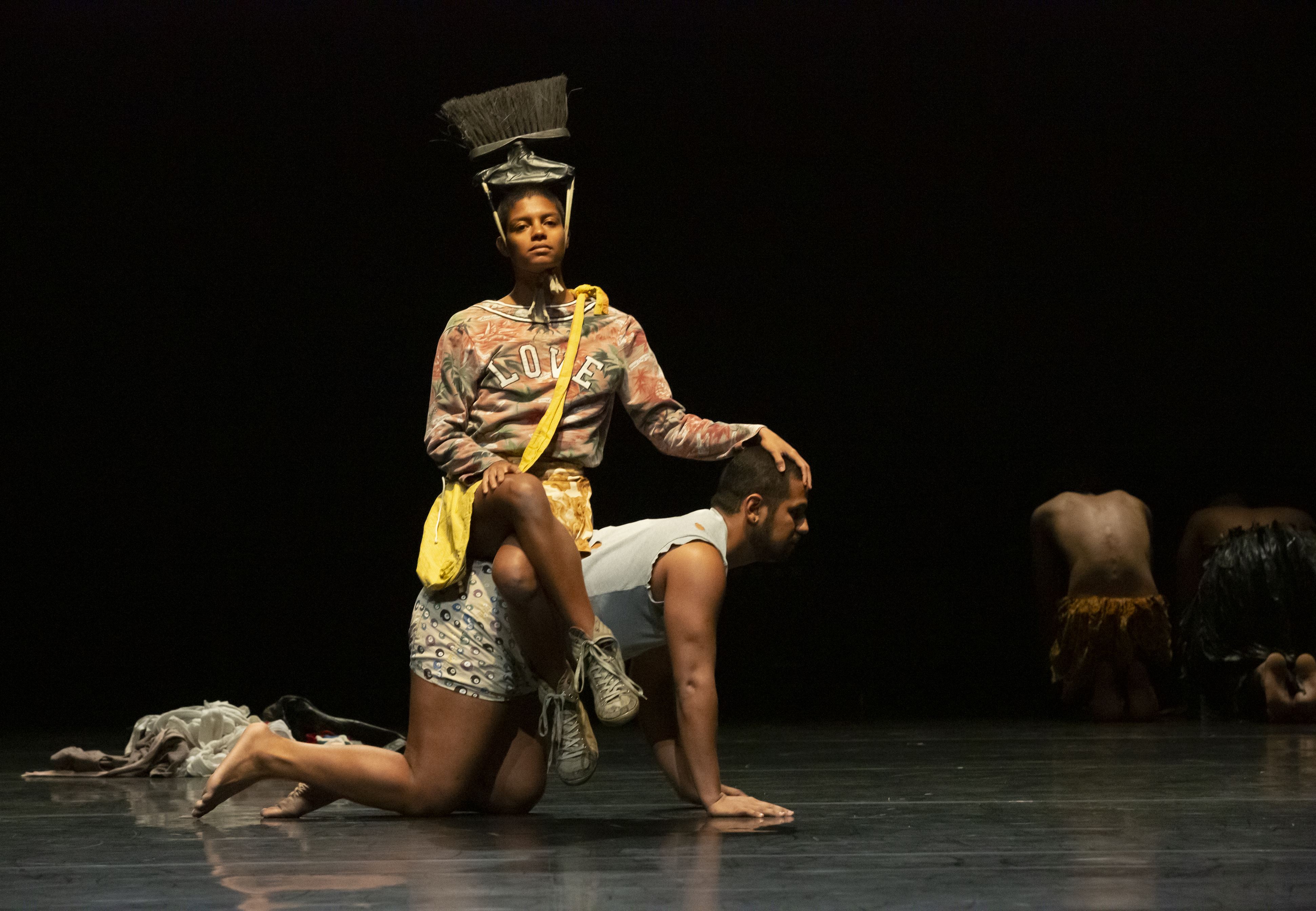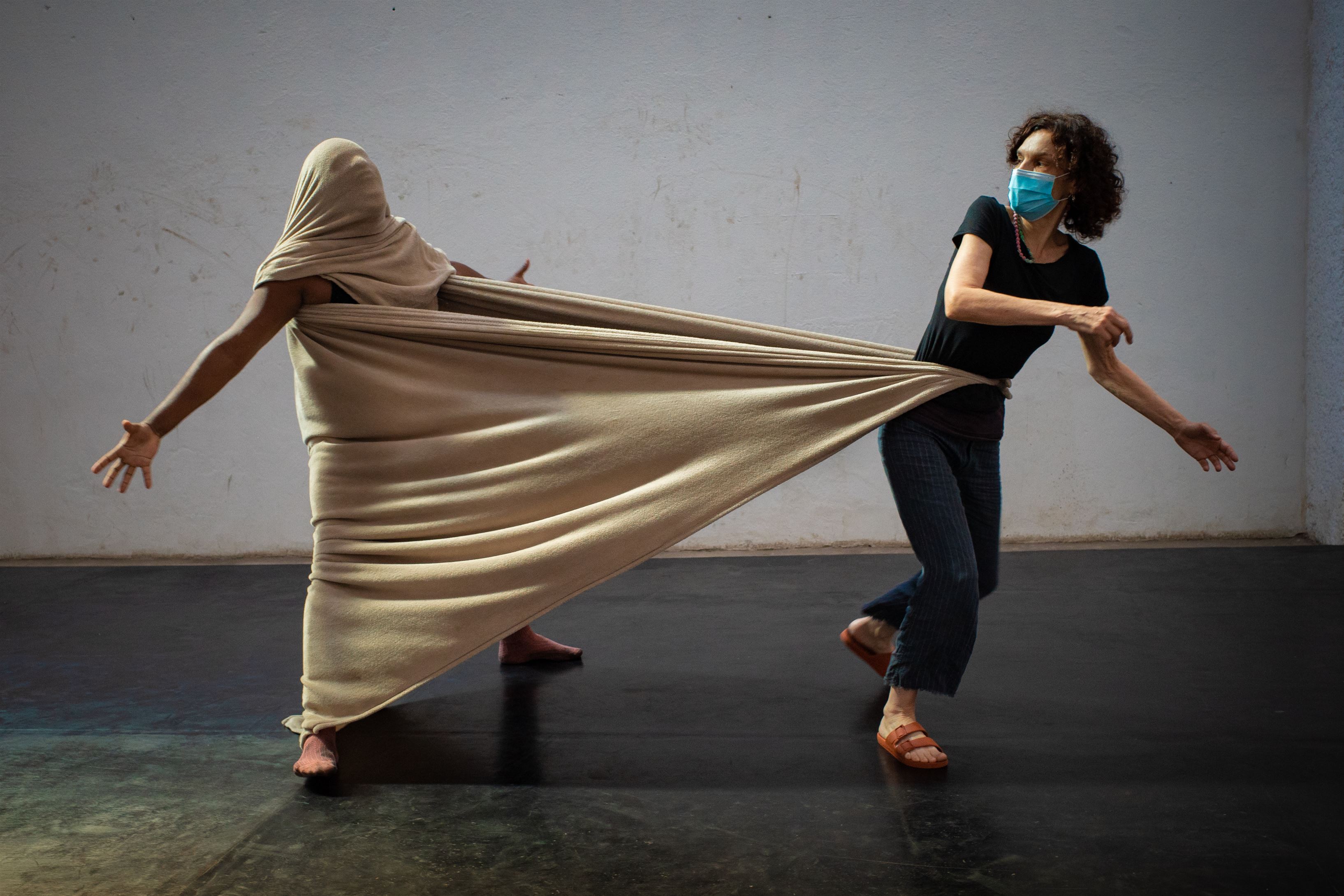“Furia” made its regional debut at Montclair State University’s Alexander Kasser Theatre on Nov. 3.
Lia Rodrigues, the artistic director and choreographer, opened the night by encouraging everyone to move to the center of the theater. As the lights went down, there was a moment of silence in the dark. With musical excerpts of “traditional songs and dances of Kanak, New Caledonia,” according to the PEAK performance program, playing in the background before increasing in volume, the performance commenced.
Several images popped into my head throughout the performance, as if someone were holding a sign with specific words on it, walking amongst the dancers. I saw agony when two dancers, who were visibly close to each other, were separated with one being dragged away while struggling. I saw anguish when they all huddled together, some crawling away, dragging their fingers across the stage floor in protest.

Felipe Vian and Larissa Lima are two performers in the show.
Photo courtesy of Marina Levitskaya
Some moments stood out as highlights, where one dancer would climb on top of another, stacking themselves and towering over the rest, which made me think of who was representing superiority and inferiority. There were times when the dancers would smile and seem to be in celebration as they moved in a circle, in sync with each other while in other moments it was the opposite. Some other parts, like when the nine dancers were grouped together and looking up at the one light off in the distance, were moments to remember.

Ricardo Xavier and Larissa Lima perform in “Fúria.”
Photo courtesy of Marina Levitskaya
Rodriques spoke about the process of how “Furia” came to be.
“We built a collection of images of the world and Brazil, images of the present and the past, images of joy, pain, violence, love,” Rodrigues said. “Everything is used to open the field of possibilities. This is part of a movement of recycling. With these materials, we can create whatever we want – a king, a queen, a boat, a procession.”

Lia Rodrigues is the artistic director and choreographer.
Photo courtesy of Sammi Landweer
Jenny Asuzano, a sophomore film and television major, said they didn’t know what to expect from the performance. Although they did not know much about dance, they wanted to learn more.
“It was absolutely, positively not what I expected,” Asuzano said. “I was surprised with how bold the choreographer was, and it really was put together beautifully. Definitely left the theater confused, but it still was absolutely an interesting experience.”

Jenny Asuzano, a sophomore film and television major, said they didn’t know what to expect before the performance.
Stephanie Arias | The Montclarion
Senior film and television major Sofia Ambrosio, who attended with professor Christopher Parker as part of the creative thinking class, explained her perspective. Ambrosio noted some audience members left feeling very “skeptical.”
“I think their performance was an experience full of emotions – that is every kind of emotion,” Ambrosio said. “The performers’ facial expressions and body movements worked together to create an experience for us. I would say a word to describe this show is ‘primal.’”

(left to right): Sofia Ambrosio, Professor Christopher Parker and Alex Paulino attended the performance.
Stephanie Arias | The Montclarion
Parker also shared their thoughts on the performance.
“The dance metaphor was quite an expression of our world now and in the past,” Parker said. “All of these work together in ‘Furia.’ But I enjoyed it, and it fits in as a different kind of music.”
Rodrigues explained the intended meaning behind the show.
“[The performance was] much more about establishing relationships, contact, emotions, without necessarily knowing how to name them,” Rodrigues said. “‘Furia’ is immersed in Brazil, this extremely racist and unequal country, where indigenous peoples continue to be massacred, where education and the arts suffer from censorship and a total lack of resources. Perhaps with our insistence on continuing to create, we are a small firefly light.”



